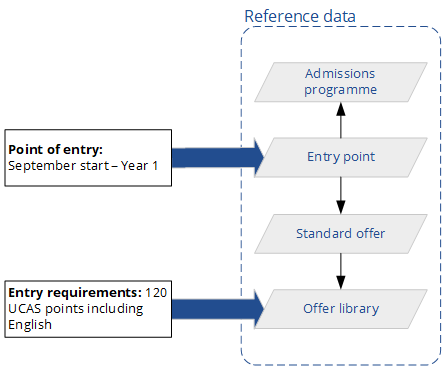programmes ?
Admissions
Programmes
Admissions
Admissions
Direct or agency applications
The entry system of
For UCAS reporting purposes, you can also define the faculty code, course type, and programme code. Note that the fields for clearing information and adjustment places are not used in Admissions.
ATAS programmes
ATAS registered programmes are subject to the Academic Technology Approval Scheme (ATAS). This applies to all international applicants, apart from some exempt nationalities, such as Australians, who are intending to study at postgraduate level in specific subjects, such as weapons development or delivery. For applicants to ATAS registered courses, a clearance check should be added to check the applicant possess a valid ATAS certificate. For more information on ATAS programmes, go to Academic Technology Approval Scheme (ATAS).
Joint admissions programmes
Programmes can belong to the UCAS joint admissions process. That is, an applicant may apply to one institution but complete part of the programme at another. UCAS joint admissions are typically used for medical programmes, as different institutions deliver specialised modules of study.
Programme options
For example, the
-
Bachelor of arts with honours - English literature with creative writing
-
Bachelor of arts with honours - English literature with French
-
Bachelor of arts with honours - English literature with German
For each option, you must define the sequence order that the options are listed when creating an application and the select the admissions
The route defines the combination of subjects that will be studied on the
Modules
Modules define the individual units of a
Modules are grouped together using schemes. Creating schemes for specific study areas, such as Undergraduate - English allows students taking a
Entry points and requirements
Entry points
The entry points of
Entry points assign applications to a desk for processing. For example, applications to the English Literature BA (Hons)
Entry requirements
The entry requirements of
-
Main decision (Offer 1) of the entry requirements, such as BBB excluding general studies.
-
Additional conditions (Offer 2) of the entry requirements, such as ATAS clearance for ATAS courses.
The diagram Entry points for

In addition,
Enrolment
The enrolment structure should be set up to match the values in the integrated system as applications are transferred to the integrated system for enrolment. Enrolment structure is defined in the reference data Enrolment structure and Enrolment structure type.